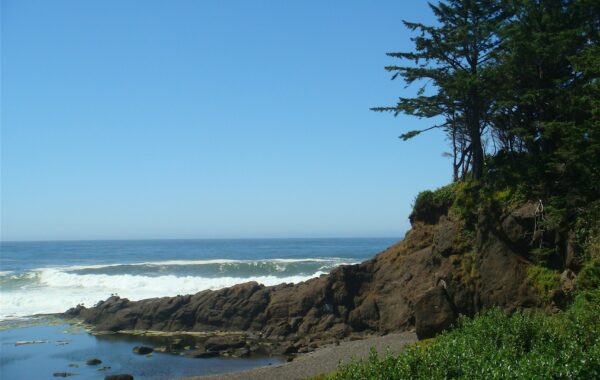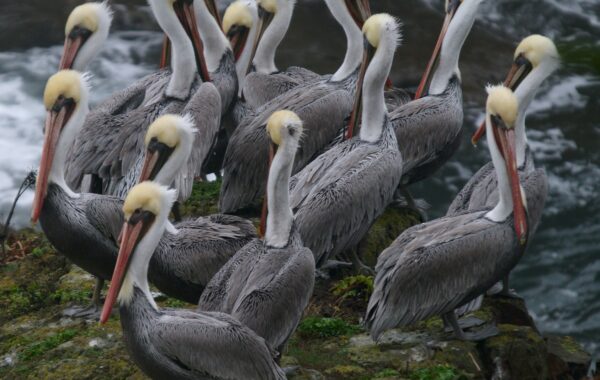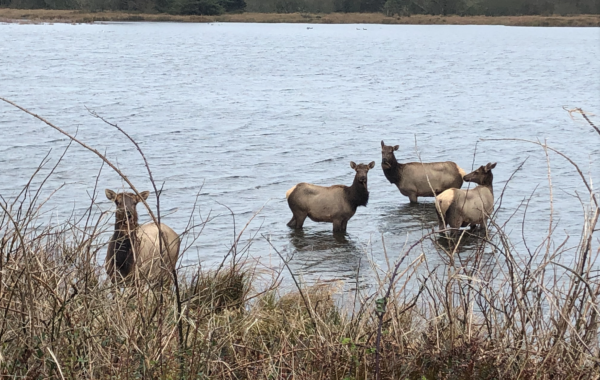Shoreline and Land Management
Land use laws and other regulations, if employed to their best effect, can do much to protect the coastal environment.

Oregon Shores works with Oregon’s statewide land use planning department on everything from coastwide policies to small urban growth boundary expansions that threaten habitat. We also work on water quality, endangered species, dredge-and-fill and other types of regulations. These technical issues are seldom glamorous, but they are where the rubber meets the road in environmental protection.
Background on Land Use Laws
Oregon Shores, founded in 1971, actually predates Oregon’s land use planning system, which is 50 years old in 2023. In fact, two of our original board members joined the first Land Conservation and Development Commission and helped to shape the structure of 19 statewide goals that forms the core of our land use regulations. We have utilized the land use laws to protect the public trust in Oregon’s beaches, ecosystems, and coastal resources, and the human communities that depend upon them.
Land use cases can drag on interminably, often going through multiple appeals and sometimes moving to the courts. The procedures can be obscure even to people who are active in conservation issues. Defending the environment through the land use system can be tough, nitty-gritty work. But land use decisions, good and bad, play a central role in shaping the present and future coastal landscape. This is why Oregon Shores gives land use planning high priority. Over the decades we have written our name into lawbooks and legal histories with dozens of precedent-setting decisions.
Many of the land use issues we work on are small-scale and local, although with important implications. Blocking the expansion of an urban growth boundary may save a wetland. Preventing development on a landslide may forestall a public safety threat. Requiring that a structure be set back from the edge of a bluff may prevent a future demand for riprap.
Past Successes Have Statewide Impact
Some land use cases are highly prominent and have statewide impact. Oregon Shores was the lead appellant on four successful appeals of local government approvals of the proposed Jordan Cove LNG export facility at Coos Bay, and lead intervenor in support of the Confederated Tribes of Coos, Lower Umpqua, and Siuslaw Indians on a fifth—these appeals played the crucial role in blocking the development, which would have become the state’s largest emitter of greenhouse gasses. Crook Point in Curry County, and the Sand Lake Spit in Tillamook County (now the Sitka Sedge State Natural Area), remain natural areas because Oregon Shores blocked proposed golf resorts at both locations. There have been many other significant victories over the years. In many cases, we have worked with the Crag Law Center, our partners in the Coastal Law Project.

Why This Matters
Land use laws are one of the regulatory tools we employ in defending the coastal environment. We have gone to court a number of times to prevent pollution or require its abatement through use of the Clean Water Act. We have drawn on the state’s dredge-and-fill law, administered by the Department of State Lands, to prevent loss of wetlands. The Endangered Species Act can also come into play, as in advocating for protection of the threatened Western snowy plover, Marbled murrelet, pink sand verbena, and other coastal species.
Looking Ahead
We can anticipate major land use cases to come. The Port of Coos Bay is seeking funds for a massive dredging project to enable development of a container port on the North Spit; this would have a catastrophic effect on the ecology of the Coos Bay estuary. We will do everything in our power to block this misbegotten scheme. Possible development of floating offshore wind off Oregon’s coast would also raise important land use questions, concerning the cables that would cross our territorial sea and the massive facilities that would be required in an estuary (presumably Coos Bay) to build and service the wind turbines. We will be deeply engaged in these issues.
We track land use and development proposals in areas of major concern, such as estuary management plans, shoreline armoring, and port development. But Oregon has a 362-mile-long coast, and threats might loom anywhere. We can’t monitor every mile of the coast without help. We rely on our supporters to alert us when a local issue arises. This support network, sounding the alarm, is essential if Oregon Shores is to move into action in time to wield land use and other regulations to their best advantage.

